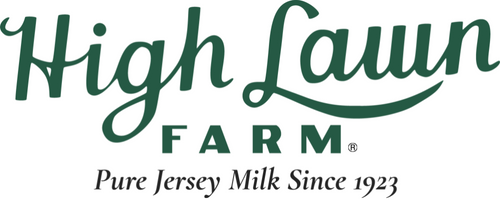High Lawn Farm’s Vibrant New (or Old, Your Take) Agricultural Model
Boston Local Food | By Kristin Van Busum
It was shortly after noon on the hottest Saturday of the year when my best friend, Raki and I arrived at High Lawn Farm. The air was stagnant and smelled of manure and freshly cut grass, cows grazed to our left, and the landscape was undeniably beautiful. I was engrossed by the scene of an idyllic family farm against the backdrop of the Berkshires.
We were greeted by Roberto, who manages the farm, a tall affable man dressed in pale khakis and a sky blue shirt. He had been working since 4:00 am, a typical schedule “no matter the day or the weather.” Cows don’t just work the nine-to-five, he said.
It was my first time on a dairy farm in the United States, and I was prepared to witness the uncomfortable realities that exist on many farms: young cows immobilized in putrid stalls, degraded farmland, drained workers.
I saw the exact opposite.
High Lawn is part of the movement toward a vibrant new American agriculture – sustainable, small-scale, and community-centric – in all aspects, the contrast of traditional industrialized models that have become increasingly prevalent the past decade.
The farm is situated on 1800 acres of land, over half of which is untouched wilderness. The cows have ample room to graze, the milking barns are spacious, and the farmers have reserved plots of land to grow alfalfa and corn for feed.
Nutritionists develop meal plans depending on the dietary needs of individual cows and to ensure the milk is more nutritionally dense than others on the market. Forty workers care for 200 cows, compared to “factory farms,” where forty workers may care for up to 5000 cows.
This care and attention allows cows to live their expected life span, 18 to 22 years, rather than an average of 2 to 3 years on an industrialized farm.
But the economic sustainability for a farm like High Lawn is in many ways difficult and requires an innovative spirit to keep the operation affordable and manageable. Roberto explained it takes months to get his product on retailers’ shelves. Contracts with Whole Foods, local coffee shops in Massachusetts, and university cafeterias (M.I.T., for example) have kept the business afloat.
Informal cooperatives are also essential for small-scale operations. If a tractor breaks down or Roberto needs advice on the latest device, he simply calls a farmer nearby. Collaboration and sharing viable business and production practices are essential because upfront investments in capital and technology are costly and markets change rapidly due unpredictable factors, like inclement weather or oversupply.
After Roberto described the installation of their cow-friendly robotic milking system, he waved his hand, gesturing us to the refrigeration unit tucked behind the milking barn. “You haven’t asked to try our chocolate milk!” he said.
As Raki and I guzzled unashamedly the most delicious chocolate milk we’ve ever had, Roberto explained he dreams of keeping High Lawn as is – a place where workers and animals are treated humanely and farmland remains protected.
Their products are filled with love, he said. “That’s what makes us different.”
Managing a small-scale farm such as High Lawn is in many ways an uphill battle, but it still feels, to him, full of promise.
See full article on Boston Local Food Festival here.



